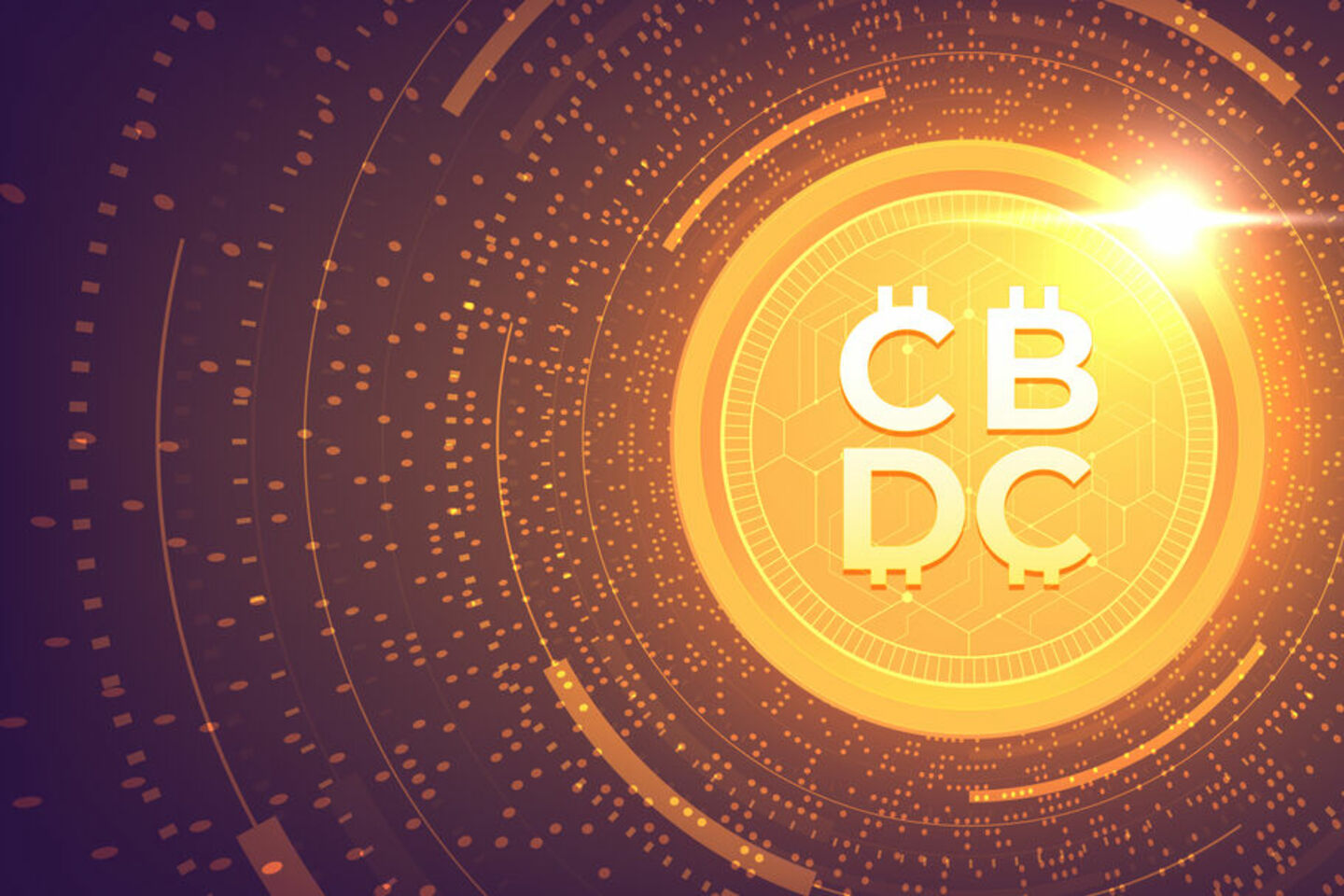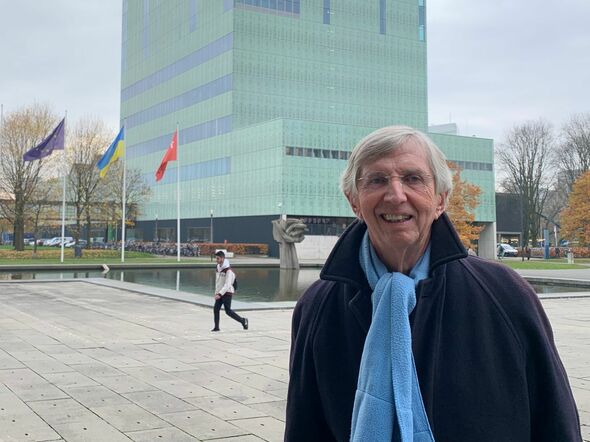
Prof Talk | Will digital currency be used to monitor your spending?
TU/e professor has a proposal for the implementation of the Central Bank Digital Currency
The Central Bank Digital Currency (CBDC) is being developed and a lot of conspiracy theories are going around about how this digital currency will serve as a monitoring tool for the government. Is this true? Cursor spoke to Kees van Hee, professor emeritus at the Department of Mathematics and Computer Science. Together with ex-TU/e professor Jacob Wijngaard, he published two articles about the implementation of digital money in a journal of economics. He is also developing an architecture for digital currency systems together with researchers of the central bank of the Netherlands and the Bank of International Settlements.
Today’s society is relying more on more on bank cards. In the Netherlands, as few as one in five payments are made in cash. But if every Dutch person suddenly decides to withdraw their savings, there will be a problem: there aren’t enough bills and coins. Van Hee: “Even if only five percent of people come for their money this will still be too many, as illustrated by the collapse of the Dirk Scheringa Bank in 2009. We have the Positive Money movement now, which wants to get rid of debt money and move towards a situation where commercial banks are no longer creating money. This right would then be reserved to the central bank, which would use the CBDC. It would be great if we could make this happen and say goodbye to the old system.”
“My proposal would be that the central bank is concerned with the money itself, and the commercial banks with credits. As was originally intended,” says Van Hee. “You wouldn’t be able to overdraw a CBDC account with a central bank, but you could still borrow money from a commercial one. If an account can’t be overdrawn, the central bank runs no risk. You can have a savings account at a commercial bank as well.”
If we introduce the CBDC, it’s not such a problem if a Dutch commercial bank like ING or Rabobank goes belly up: your money is safe with the central bank, even if you have more than 100,000 euros
“You might think that if you’re with a commercial bank, your money comes from the central level, but that’s not true. The commercial bank created that money itself. In the Netherlands, 100,000 euros per person per bank is guaranteed if the latter makes a mistake. A traditional bank spends ahead a lot. ‘Loan X will soon be paid, here’s some money for your loan already.’ This was a reason for banks to create money. Luckily, the amount a bank can create is subject to rules. This is still not a good system, but most people don’t understand it and aren’t directly bothered by it, so they think ‘whatever’ or simply aren’t aware of any issues. If we introduce the CBDC, it’s not such a problem if a Dutch commercial bank like ING or Rabobank goes belly up: your money is safe with the central bank, even if you have more than 100,000 euros. The central bank can’t go belly up and can always print more money, without limits. Which of course does pose the risk of rising inflation. Then monetary politics come into play, but they do now as well. Payment traffic will simply be cleared with the CBDC. Right now, if you make a transfer to a friend in Italy from your Dutch account, it goes from Rabobank to the Dutch central bank to the European Central Bank to the Italian national bank to your friend’s commercial bank. Once CBDC is introduced in the whole of Europe, the transfer will be direct.”
Read on below the photo.
Means of exchange
“It’s not easy to change the payment system we have now, as it wasn’t designed but simply turned out this way,” says Van Hee. “That means you can’t change it by flipping a switch. Money is a means of exchange (to get food), a means of saving (delayed paying) and a means of assigning value to something (such as a painting). This used to be done with valuable assets, such as gold, salt (a long time ago) and camels. A good means of payment has the following characteristics: small, easy to transport and stable in value. So a camel isn’t suitable, because sooner or later it will die.”
“Over the years those means of exchange disappeared into the background and we started to mint coins, which entitle the holder to gold, stored in a kind of Fort Knox. The central bank of the Netherlands still works like this. Now we trade using bills and coins that refer to that gold. Some economists call those bills and coins certificates of debt. In 1971, things went wrong around the Vietnam war. Too much extra money was printed and it couldn’t be matched to the available gold any more. All of a sudden, bills went from being certificates of debt to slips of paper depicting George Washington. But the Americans had a trick up their sleeve: oil could only be paid in dollars, which quickly became the standard. Attempts by the Russians, Chinese and Iranians to change this have so far been unsuccessful. To sum up, bills are given a value if you need them for something, which in turn sparks the demand for the means of payment.”
Better security
One of the conditions to using money is that you make double spending impossible. With bills we do this by checking if they’re real, while in the digital world we use technology to make sure you don’t manipulate your balance. “Every digital transaction requires a third party (a bank, a person, a computer, etc.). The only thing that would change is that from now on that party would be the central bank.”
“If we look at the Bitcoin trade, we see similar problems to using traditional banks: FTX went belly up because they basically sell crypto-based debt acknowledgements to investors. If a lot of people suddenly decide to cash in, there’s not enough money to go around. One difference between CBDC and Bitcoin is that the latter is finite, while with CBDC money can be revoked and printed again. The security technology also differs: Bitcoin uses blockchain, whereas for CBDC we have proposed a unique balance identification using comparable cryptology: asymmetrical keys and hashing.”
"For every account you have, you save your own balance record, which is tied to a sequential number and encrypted using the central bank’s secret key. Using the bank’s public key the balance can be checked, but it can’t be manipulated as this would require the secret key. If you want to transfer money to someone else, both of you have to submit your balance record and a transaction record stating how much money is involved with the transfer. The central bank checks whether the balance records belong to the right people and if the sequential numbers are the most recent ones. The bank then proceeds to increase the recipient’s balance and decrease the sender’s balance by the same amount. Subsequently, the sequential number for both balances is increased by one and everything is encrypted with the central bank’s secret key and sent to both people involved. The central bank does not store the balance, just the account’s updated sequential number, which is meant to prevent double spending."
“Banks still have computers from the seventies. These are reasonably well protected from external break-ins, but can still be manipulated by the people working on the inside. This won’t be possible in the future. The calculations described can be performed quickly and it’s not difficult to process millions of transactions per minute. You could opt for keeping records of balances and even transactions, but it’s not absolutely necessary.”
CBDC as a monitoring tool
“Now CBDC is a hot topic all of a sudden, all kinds of fake news starts popping up,” he says in response to the conspiracy theories about the digital euro. “I hear stories about the government turning into Big Brother, stopping you from buying meat. Granted, such a scenario is theoretically possible, but I think the chance of it happening is very small. People are already talking about a social credit system, like in China. Should we be afraid? We basically have it already. We have cameras everywhere, which may for example be used to track down shoplifters. And we’re also remotely monitored. The other day I was in Paris and when I tried to transfer money for my accommodations to the landlord’s Lithuanian account number, I wasn’t able to. After three attempts my account was blocked and I had to call my bank. They had registered the attempts and thought it was odd I was trying to wire money to Lithuania from Paris. I explained the situation and the account was unblocked. ‘We wanted to protect you,’ the bank said. So if you make an unusual transaction, they notice. Banks employ around six thousand people that spend all day checking if anything out of the ordinary is happening. We’re already being monitored. And yes, the central bank could set a maximum daily spending amount, but I wouldn’t be in favor of this. The government and its monitoring function should be separate from banks and payments.”
Cash is disappearing
Does this mean cash will disappear completely? “Sure, in the long run. But we’re talking twenty to thirty years into the future. People often have arguments such as ‘it’s not feasible for the elderly’. But the elderly will pass away at some point.” And once cash is gone, what do we do if there’s a power outage and there isn’t any cash money as a backup? “Give the greengrocer an IOU. Or start trading like they used to: gold and jewelry for bread. But that would be in case of an extremely lengthy black-out though. For shorter internet or power failures we’ve come up with a way to make an offline transaction from your phone, which is automatically synchronized when the internet’s back up.”
And yes, the central bank could set a maximum daily spending amount, but I wouldn’t be in favor of this. The government and its monitoring function should be separate from banks and payments
Fascinated by money
Van Hee: “I studied math and physics and minored in economics; I’ve always been interested in money. In addition to my professorship, I’m on the board of CCV, a big player in the payment systems realm. And I’ve seen how impossibly complicated paying has gotten over the past decades. Nobody understands it anymore, which is why I stepped it with this proposal to make things easier.”
Will your proposal to introduce the CBC make it, you think? “Banks are conservative. They are prepared to run limited tests, but you want to go big with something like this. Otherwise we’re just creating another option next to the existing ones. We have a supporter in Christine Lagarde of the European Central Bank. One problem would be that banks employ a lot of monetary economists and very few engineers. And we’d need more of the latter.”
While we’re at it, why don’t we introduce a single global currency? “Monetary politics would get too complex and only one bank in the world would be able to print extra money. A lot of countries don’t want that, as it would affect their sovereignty. The British want to keep their pound. The US will never leave its monetary affairs to Japan. Europe has done very well to introduce the euro for such a large number of countries, which is no mean feat.”


Discussion